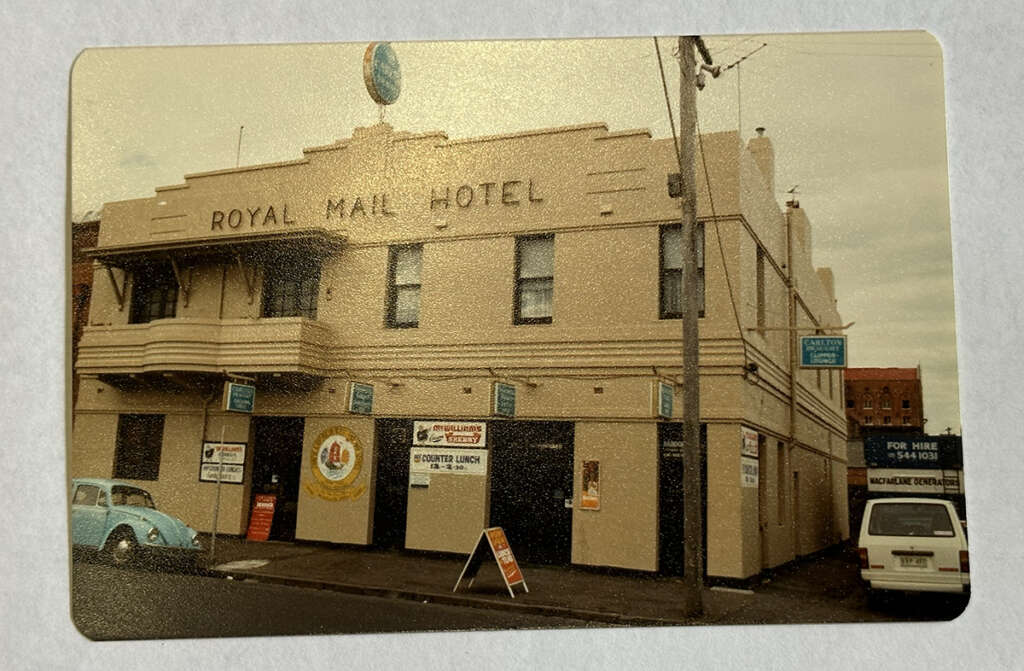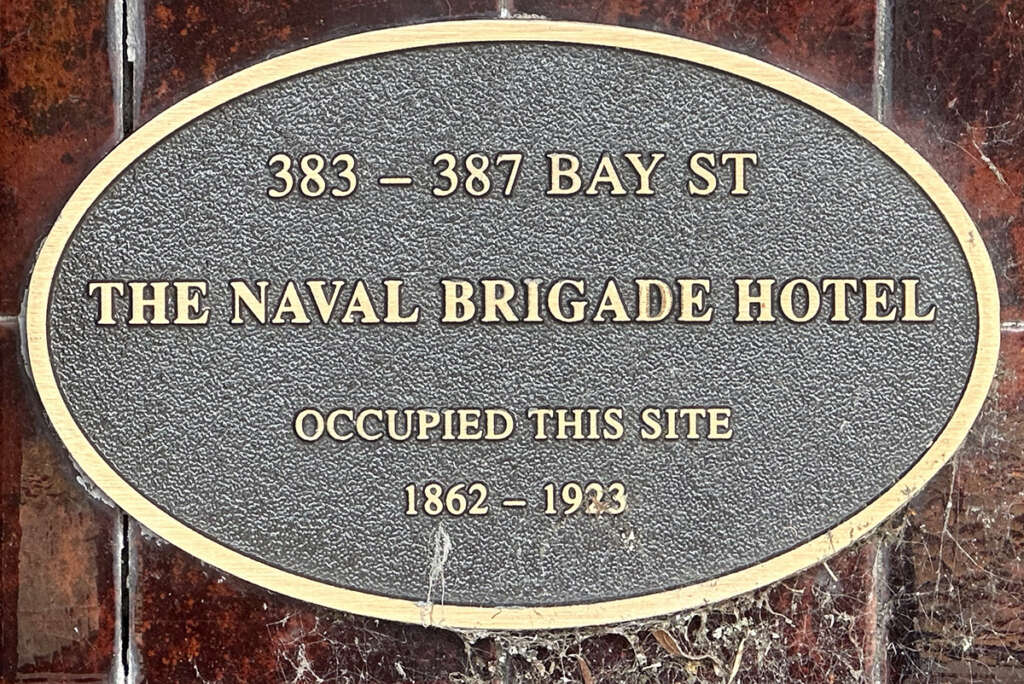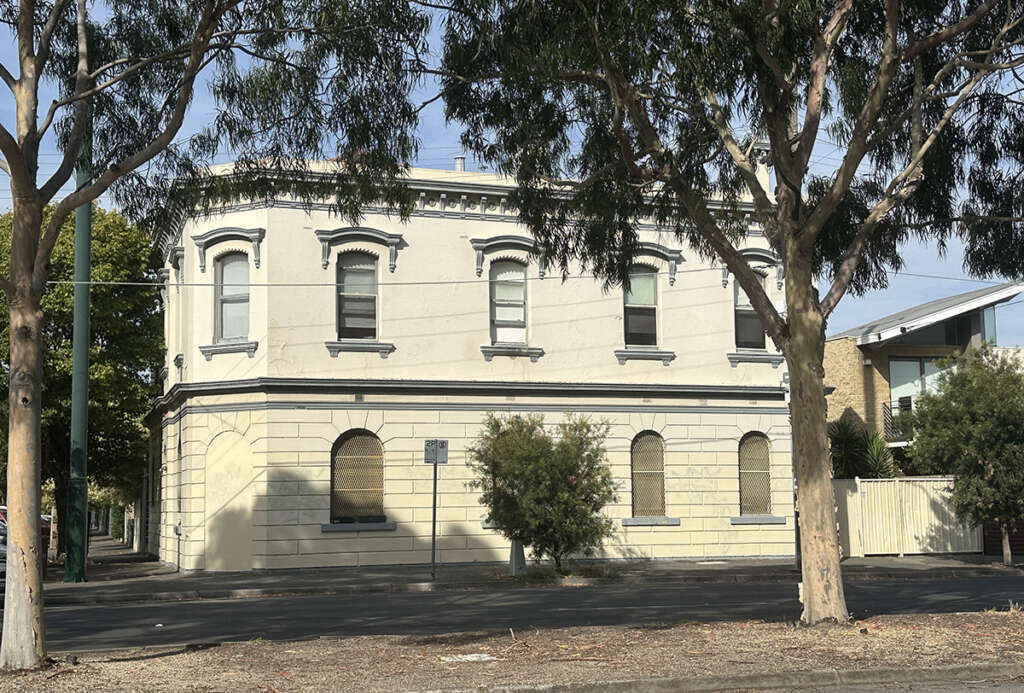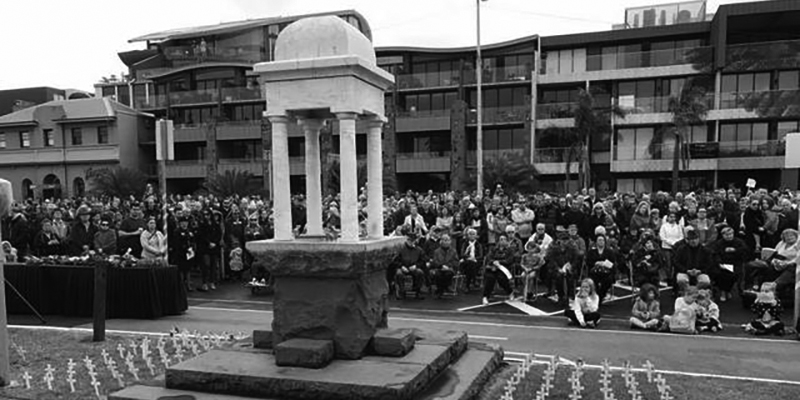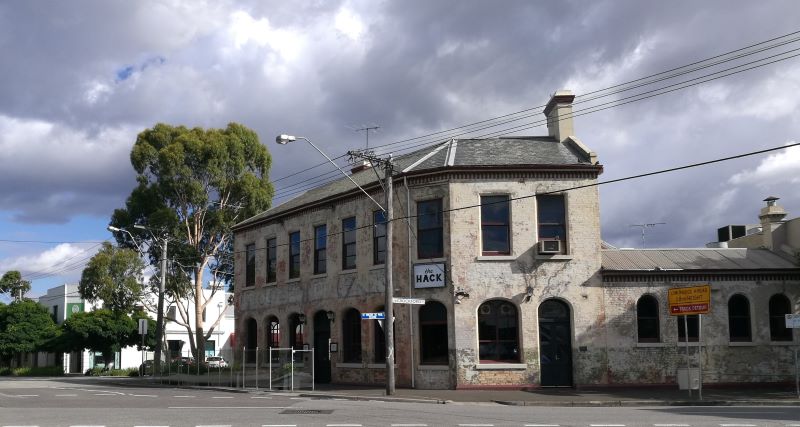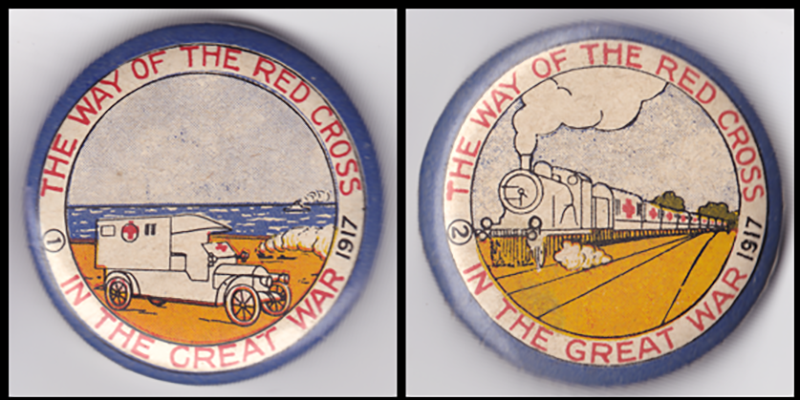Six to be Eliminated
by David Thompson
Port Melbourne entered 1924 with six fewer pubs than the previous year! [1]
A delicensing authority was established in 1906 leading to the closure of the Belfast Hotel, the Commercial Hotel, the Custom House Hotel, the Fire Brigade Hotel, the Lord Raglan Hotel, the New Great Britain Hotel, the Star Hotel and the Yacht Club Hotel in 1909; and the closure of the All England XI, the Army and Navy Hotel, the Bay View Hotel, the Cosmopolitan Hotel, the Fitzjames Hotel, the Globe Hotel, the Prince Arthur Hotel, the Royal Hotel, the Ship Hotel and the Washington Hotel in 1915. [2]
With the passing of a new act, the Licences Reduction Board wasted little time enforcing their new powers by instructing inspectors in January 1923 to prepare ‘black lists’ of hotels and whatever objections they might have to the licences. In most suburban districts, including Port Melbourne, all hotels were to be listed, not because every hotel would be considered for closure but so that future deprivation sittings would have a complete record of the good and bad hotels for comparison. [3]
The deprivation sitting for the district of Port Melbourne was set for Monday, 5 March 1923 at 2.30pm. Although an ’A’ List of the All Nations Hotel, the Australian Eleven Hotel, the Council Club Hotel, the Clare Castle Hotel, the Foresters’ Arms, the Fountain Inn, the Marine Hotel, the Naval Brigade Hotel, the Prince Alfred Hotel, the Rose and Crown Hotel, the Royal Mail Hotel and the Southern Cross Hotel was drawn up but all Port Melbourne hotels would be summoned and the entire list would be called on the first day of the sittings. [4]
The Licensing Court heard evidence with the aim to close seven of the 28 hotels in Port Melbourne. The licensing police contended that the seven pubs to be closed should come from the ‘A’ List previously identified. The evidence presented in favour of the closure of each hotel included its reputation, the number of bedrooms compared with nearby hotels, the dining facilities and whether the hotel had been involved in after-hours trading. [5]
The Record reported that ‘Of the Royal Mail, of which Mrs Hamilton is the owner and licensee, Plainclothes Constable Hartley stated that it contained nine rooms, six of which were bedrooms. Four bedrooms were available to the public, in which there were 11 beds. The hotel was 86 paces from the Pier Hotel. The Stevedores’ Club; of 2,500 members, was opposite. The Exchange Hotel was 86 paces away. The Pier Hotel was on the better site, and had 14 rooms, of which eight were bedrooms. Six bedrooms were available to the public. The Exchange Hotel had 16 rooms, of which eight were bedrooms. Five bedrooms were available to be pubic. In the five bedrooms were six beds. The kitchen of the Royal Mail Hotel was fairly large, but the dining room was small.’ [6]
‘Plainclothes Constable Grant considered two hotels sufficient in this block – the Pier and the Royal Mail. Situated opposite a school and with the licensees often changing, while he understood it did not provide meals and bed for the public, the Exchange was least required. The Exchange was the newest building, and should be the best able o provide meals and beds – if the licensee would do so.’ [7]
‘Percy Harvey, formerly pier master, Mr Billings, coal foreman, and Lieutenant
Robert Fulton RAN considered the Royal Mail Hotel a public necessity for the provision of meals and beds. Similar evidence was given by Constable S A Shergold, Arthur McLean (engine driver at Robert Harper and Co), and Richard Michael Cranny (manager and secretary of the Stevedores’ Club of about 2,000 [sic] members). James Hamilton, son of the licensee, submitted and explained plans of her intention to enlarge the premises. The court reserved its decision till all the cases had been heard.’ [8]
On the 23 March, the Licensing Court deprived 20 hotels of their licences. Seven in Abbotsford, seven in Richmond and six in Port Melbourne. The licences would become void at the end of the year. [9]
The chairman, Mr Barr, said ‘that in closely settled industrial districts such as the three dealt with, the old licensing conditions allowed hotels to spring up close together to an extent out of proportion to the read needs of the areas’. [10]
The Royal Mail Hotel, the Exchange and the Pier Hotel survived the hearings and survive in altered forms in that seaside block of Bay Street to this day.
The All Nations Hotel, Beach Street; the Australian Eleven Hotel, Bay Street; the Council Club Hotel, Bay Street, the Marine Hotel, Nott Street; the Naval Brigade Hotel, Bay Street and the St Osyth Hotel, Graham Street were the six Port hotels to be eliminated. [11] The St Osyth Hotel was the only one of the six to come from outside the original ‘A’ List drawn up by the licensing police.
The six hotels closed their doors for the final time at 6.00 pm on Monday 31 December 1923. [12]
[1] 1924 ‘PORT MELBOURNE HOTELS’, Record (Emerald Hill, Vic. : 1881 – 1954), 5 January, p. 1. , viewed 18 Feb 2024, http://nla.gov.au/nla.news-article162536191
[2] Grainger, P. 2007 Chartered Scoundrels: A brief history of Port Melbourne hotels. p. 35., 1st edn. Port Melbourne, Vic: Port Melbourne Historical and Preservation Society.
[3] 1923 ‘HOTEL LICENCES..’, The Age (Melbourne, Vic. : 1854 – 1954), 16 January, p. 11. , viewed 18 Feb 2024, http://nla.gov.au/nla.news-article203789276
[4] 1923 ‘LICENSING COURT.’, Record (Emerald Hill, Vic. : 1881 – 1954), 10 February, p. 2. , viewed 18 Feb 2024, http://nla.gov.au/nla.news-article162537423
[5] 1923 ‘PORT MELBOURNE HOTELS.’, Record (Emerald Hill, Vic. : 1881 – 1954), 10 March, p. 3. , viewed 18 Feb 2024, http://nla.gov.au/nla.news-article162535034
[6] Ibid
[7] Ibid
[8] Ibid
[9] 1923 ‘WHY THEY MIST GO’, The Sun News-Pictorial (Melbourne, Vic. : 1922 – 1954; 1956), 24 March, p. 4. , viewed 18 Feb 2024, http://nla.gov.au/nla.news-article274013366
[10] Ibid
[11] 1923 ‘PORT MELBOURNE HOTELS.’, Record (Emerald Hill, Vic. : 1881 – 1954), 24 March, p. 3. , viewed 18 Feb 2024, http://nla.gov.au/nla.news-article162541269
[12] 1924 ‘PORT MELBOURNE HOTELS’, Record (Emerald Hill, Vic. : 1881 – 1954), 5 January, p. 1. , viewed 18 Feb 2024, http://nla.gov.au/nla.news-article162536191

